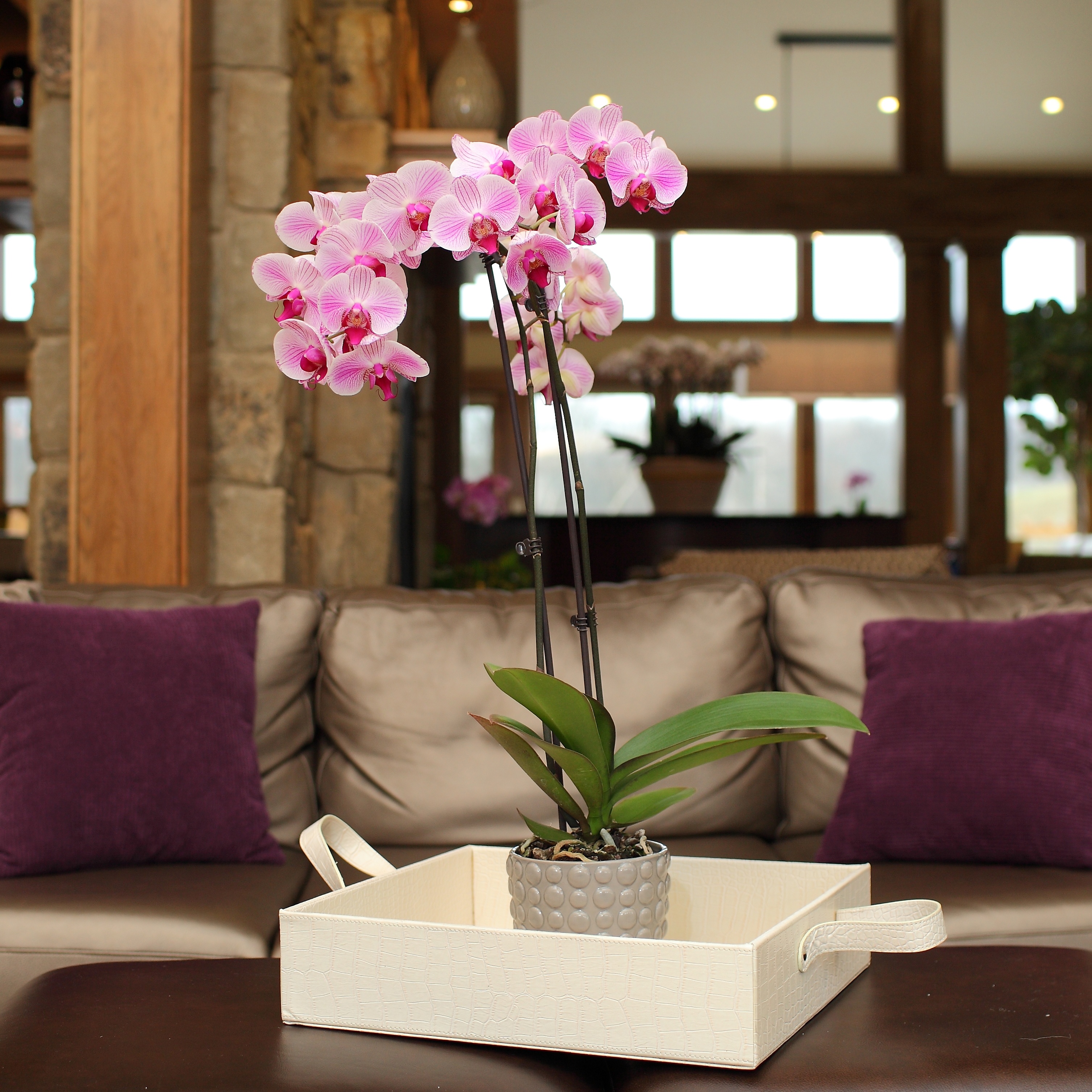
You want your orchid to stay healthy and thriving for as long as possible — which means you’ll eventually need to find it a new home. Since many orchid owners find repotting to be a little intimidating, today we’re going over all the signs it might be time to repot, as well as a few tips for getting started.
First, let’s discuss why repotting is important for the health of your orchid.
Repotting helps keep your orchid healthy and ensure it will keep growing.
Moving your plant to a larger pot helps facilitate growth and ensure the potting media stays fresh. When it comes to repotting, however, timing is everything. If you repot too early, you could negatively impact the future growth of your orchid or cause blooms to fall off prematurely.
Most experts recommend repotting orchids every one to two years, and that can be a great rule of thumb to follow. However, there are a few other reasons that may come up in the meantime that require repotting earlier or more frequently. Here are a few common reasons:
Even if you’ve repotted other plants before, make sure you do your research before repotting an orchid. First, be as careful as possible when removing your plant from its current container. You’ll need a new pot that is around an inch larger than the pot your orchid has just outgrown — and make sure it has drainage holes. Ideally, all of the roots of your plant will fit into the new pot with about half an inch of space around the sides of the pot, which you can then fill in with potting media.
Want to make repotting even easier? Order our Orchid Repotting Kit!
It contains everything you need to repot your orchid, including a new pot, potting media and step-by-step instructions.

Copyright Just Add Ice® Orchids 2023